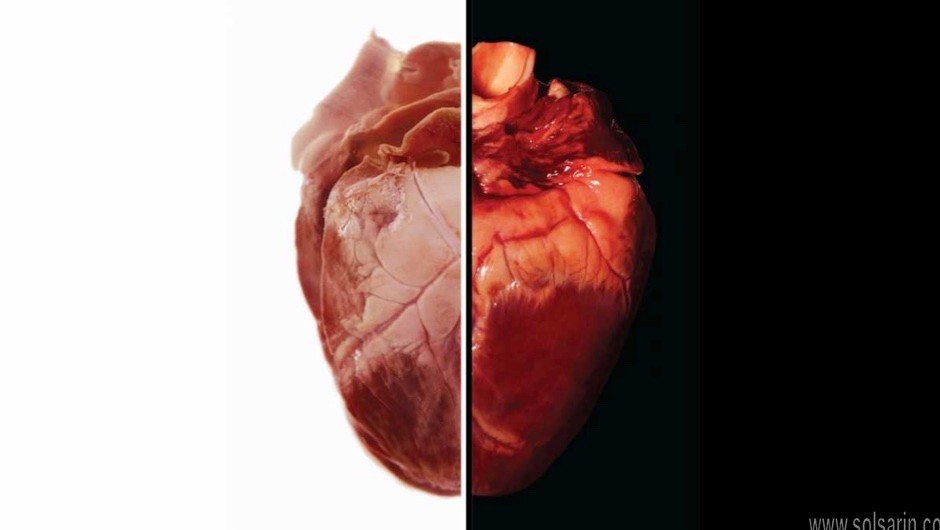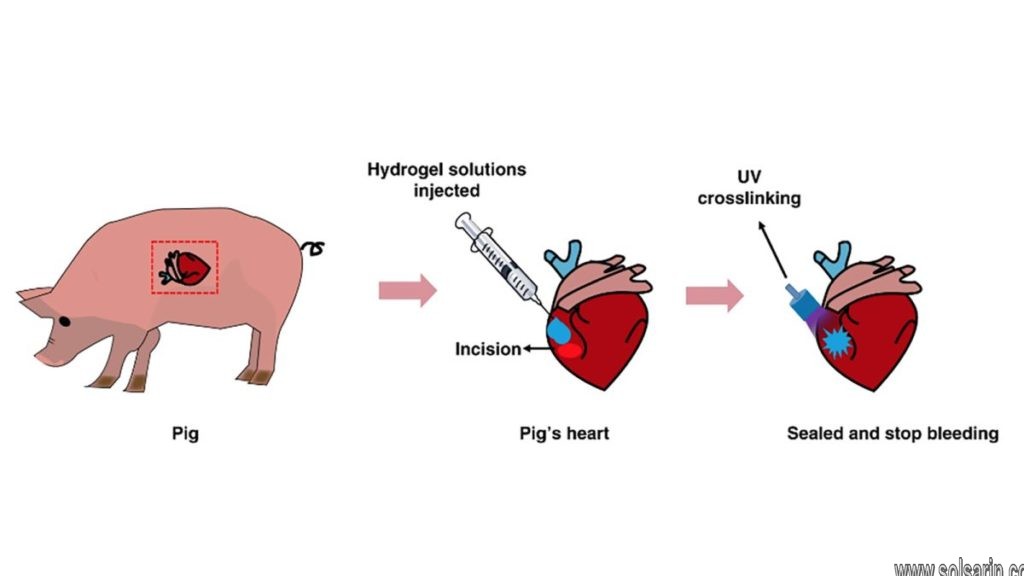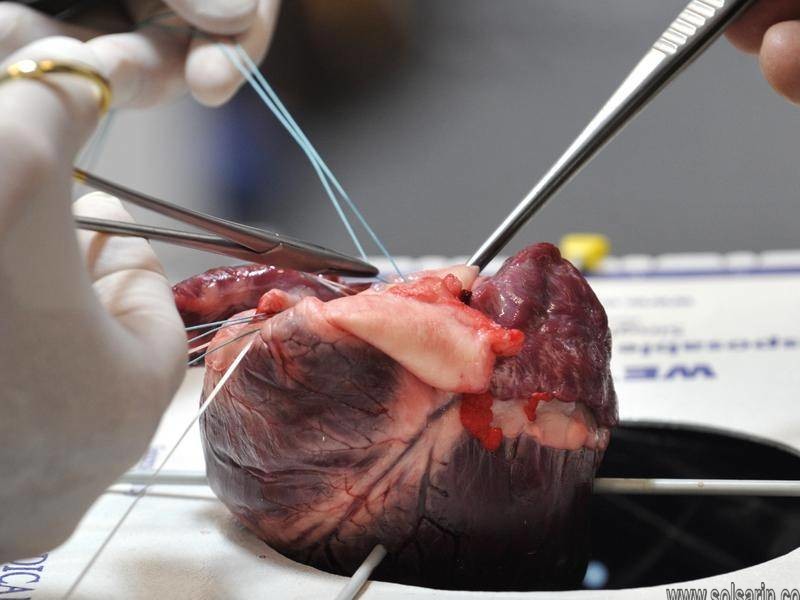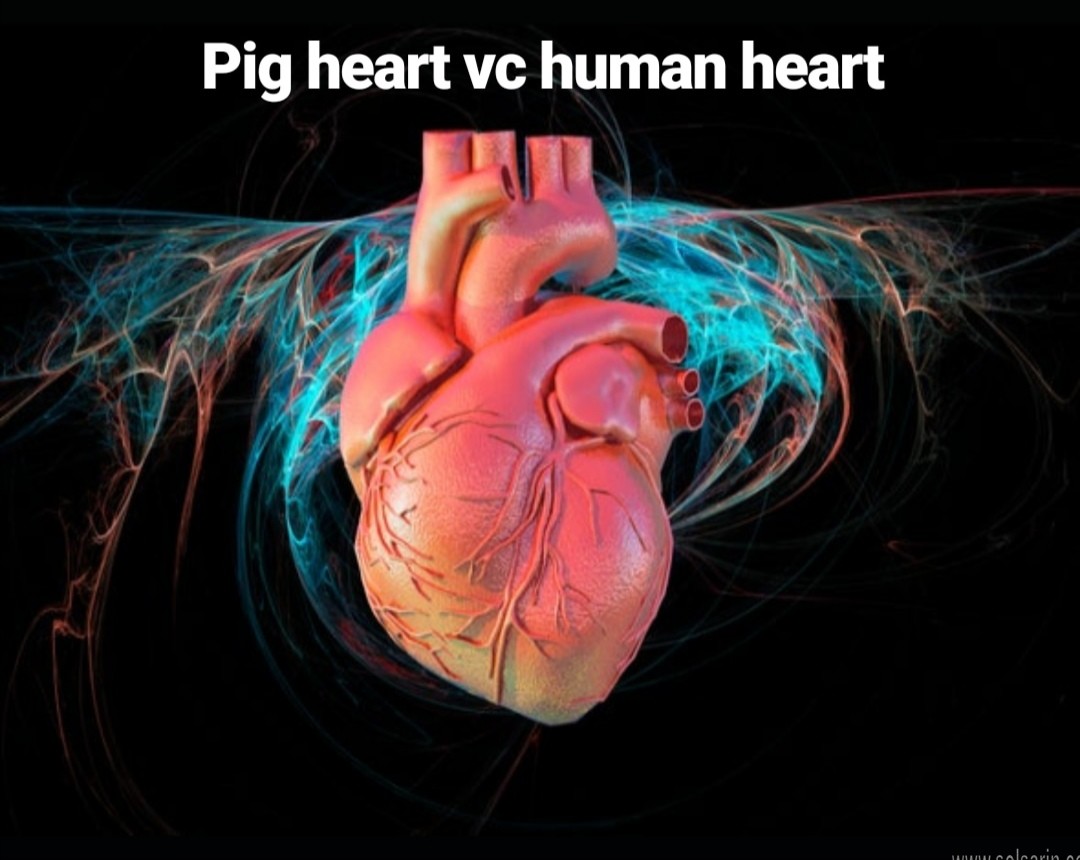pig heart vs human heart
Hi, welcome to solsarin site, in this post we want to talk about“pig heart vs human heart”,
stay with us.
pig heart vs human heart
Pig hearts are used to study the anatomy of human hearts because they are very similar in structure, size and function to human hearts. These similarities, combined with the fact that they are much more readily available than human hearts, make them an ideal choice for research and study.
Similarities
Like a human heart, a pig heart consists of four chambers: two atriums and two ventricles. Likewise, consistent with the structure of a human heart, it has four valves and an aorta. These similarities allow blood to flow through a pig’s heart in the same way it flows through a human’s heart. In fact, pig hearts are so similar to human hearts that tissue from pig hearts is used to make heart valve replacements for humans. Of course, the tissue is treated before surgery to decrease the likelihood of the recipient’s immune system rejecting it.


pig heart vs human heart
| Features | Pig’s Heart | Human Heart |
| Shape and Orientation of the heart | Possess a typical “Valentine shaped heart” which is oriented in line with the unguligrade stance of the pig | The heart is trapezoidal in shape and is oriented in line with the orthograde posture of the human being |
| Presence of tubular appendage | Observed in the right atrium | Observed in the left atrium |
| Orientation of the vena cava’s | The superior and inferior vena cava opens into the right atrium at right angles to each other | The superior and inferior vena cava opens into the right atrium in a straight line at 180 degree. |
| Azygous Vein | Prominent left azygous vein enters into the left side of the heart and drained via coronary sinus. | No prominent azygous vein but reduced left superior caval vein or oblique vein present |
| Characteristic of Pulmonary veins | Left atrium receives only 2 pulmonary veins | Left atrium receives only 4 pulmonary veins |
| Sweep between inlet and outlet components of right ventricle | Less prominent | More prominent |
| Muscular moderator in right ventricle | Prominent and situated higher up in the right ventricle | Less prominent and situated lower down in the right ventricle |
Characteristic of Apical components |
Contains coarse trabeculations and are broader | Coarse trabeculations are absent and is much narrower |
| Aortic-Mitral fibrous continuity | Reduced as 2/3rd of aortic valve is supported by left ventricular musculature | Not reduced |
| Length of the left and right coronary arteries | Each coronary arteries runs similar length and gives off the interventricular branch | The coronary arteries do not run similar in length hence the length and origin of the interventricular posterior branch are highly variable. |
| Coronary Dominance | Right coronary dominance absent | Surface distribution of the coronary arteries are predominantly on the right side of the heart |
| Difference in right and left atrio-ventricular branches | The right atrio-ventricular branches are less developed than their left counterparts | No such differences exist between the right and left atrio-ventricular branches |
| Recognisability of diagonal or left branches to conus arteriosus | Non recognizable | Well recognizable |


A History of Heart Transplant
A heart transplant is when a healthy heart is taken out of a person who has recently passed away and attached to the circulatory system of a person who has a heart problem or disease affect their heart. The person who has had their heart transplanted must have; lived a very healthy lifestyle; not have any history of heart disease; not have smoked; be of a similar age size and weight to the person taking the heart. The reason for having a heart transplant tends to fall into two categories. These are: cardiomyopathy and coronary heart disease.
Coronary heart disease is when your heart is struggling to work as the vessels leading to it clogged and therefore narrow. Although there are several ways of treating this disease sometimes if there is late discovery and a patients life is at risk or a treatment plan hasn’t been followed then a transplant may be necessary.
The aim of our Project was to find out whether or not an animal to Human Heart transplant was Possible. We also wanted to find out more about hearts and how they worked.
- 1902~ Alexis Carrel demonstrates that it is possible to join blood vessels and therefore do organ transplants
- 1964~ The first animal to human heart transplant in the USA. They used a chimpanzee’s heart for this procedure
- 1967~ Dr Christiaan Barnard performed the first human heart transplant in Cape Town, South Africa.
- 1968~ First UK heart transplant took place in the National Heart Hospital, Marylebone, London.
- 1979~The programme of UK heart transplantation began in 1979
How a pig heart was transplanted into a human for the first time?
FOR the first time, a human has been given a transplant of a pig’s heart. David Bennett, 57, had the operation in Baltimore, Maryland, on 7 January using a heart that had been genetically modified to boost the chances of acceptance in a human body.
The donated heart came from a pig developed by US firm Revivicor. In total, the animal had 10 genes modified. Four of those were inactivated, including one that causes an aggressive immune response and one that would otherwise cause the pig’s heart to continue growing after transplant into a human body.
To further increase the chances of acceptance, the donor pig had six human genes inserted into its genome and Bennett is taking immune-suppressing medications. As this story went to press, Bennett was coping well with the new heart, but hadn’t yet been taken off a heart-lung bypass machine supporting its function. His medical team told The New York Times that the animal heart was doing most of the work and that, so far, the heart “looks normal”.
“This is a great step forward – you can compare it with the first landing on the moon,” says Joachim Denner at the Free University of Berlin.
Transplants from other animals, known as xenotransplantation, have long been seen as a way to save the lives of the thousands of people who die each year while waiting for an organ transplant. The chief concern is whether our immune systems will accept such transplants, as organ rejection can happen even between carefully immunologically matched human donors and recipients.


How a pig heart was transplanted into a human for the first time?
These first days are a critical test, although immune rejection could take weeks or longer to develop,
says Denner, who has been involved in primate research using Revivicor’s pig organs, but has no financial connection to the firm. “We have to be cautious. We have to wait and see,” he says.
Bennett was approved to have the risky procedure as he was too sick to go on the waiting list to get a
human heart. moreover, If he is successfully taken off the bypass machine and continues to stay well, it could open the door to such transplants for a growing pool of other people. It could also lead to pig-to-human transplants of kidneys, livers and lungs in future.
There have been fears that virus genes naturally found in pig DNA could cross to humans, but these have faded after successful transplants of pig pancreas cells into people with diabetes. No such problems have arisen with transplants of whole pig organs into primates either.
Ethical considerations
MNT also spoke with Dr. L. Syd M Johnson, a philosopher, bioethicist, neuroethicist, and associate professor in the Center for Bioethics and Humanities at Upstate Medical University, NY, about the ethical considerations of xenotransplantation.
Dr. Johnson said that with xenotransplant experimentation ongoing for almost 60 years with many failed attempts, it is too early to call this transplant a success.
According to Dr. Johnson, in the past, most xenotransplantation research focused on using organs from nonhuman primates because they are the closest genetic relatives to humans. However, that research halted due to the unknown but potentially grave risks of transmitting viruses from other primates to humans.
“That risk still exists with pigs, both from viruses they are known to carry and transmit to humans and from possible, as yet unknown pathogens,” she added. “As we enter the third year of a deadly global pandemic caused by SARS-CoV-2, a zoonotic virus that has been found in numerous other animal species, the risks of zoonotic pathogens should be front and center as we think about proceeding with xenotransplantation.”
With the current interest in using pig organs for xenotransplantation, Dr. Johnson said some may argue that because millions of pigs die each year for their meat, there is no real ethical issue about using them for their organs. Dr. Johnson disagrees.
Ethical considerations
“The pigs used for their organs are quite different from those who are killed for meat,” she explained. “They are genetically modified in an attempt to prevent rejection and to eliminate some of the known retroviruses that they carry.”
“They are pigs who will live their entire, short lives in isolated, indoor, sterile facilities, subjected to infection control measures, including artificial insemination and cesarean section births. If pigs are
used for multiple organs and tissues, they might be subjected to prolonged harm, including repeated
surgeries, restraint and anesthesia events, painful procedures, tests, and biopsies. Pigs are intelligent,
social, emotionally complex animals, and their use as organ factories would violate our current best practices in animal care and welfare.”
Rather than using xenotransplantation, Dr. Johnson urges the medical community to look at other alternatives for solving the organ shortage problem.
“One is to prevent the need for transplants by developing better therapies for the common diseases like diabetes, heart disease, and hypertension that lead to organ damage,” she said.
“Another is to accelerate research on human-relevant alternatives, like 3D bioprinting and growing
human organs from stem cells.moreover, Obtaining organs from expanded criteria donors — donors who might have chronic illnesses or who are older — is already being done and can make more organs
available for people who need them. Finally, we should use social engineering, rather than bioengineering pigs, to find better ways of encouraging more humans to be organ donors.”


Limits of animal models
Cooper, Chapman and others say that it is important to study the transplants in humans rather than baboons. The differences between species “preclude us moving further with that model to predict the clinical outcome”, Chapman says.
Non-human primates tend to have antibodies that humans don’t, which attack proteins on pig organs, so a lot of work has gone into making the organs suitable for baboons, not people.
Furthermore, researchers need to be able to study the pig heart’s physiology — whether it will beat at the same rate as a human heart, for instance — and whether ill people will react to the transplant in the same way as healthy baboons.
Several other companies are engineering pigs for solid organ transplants with different genetic modifications,
although none yet has medical-grade facilities, as United Therapeutics does. eGenesis in Cambridge,
Massachusetts, is making pigs that cannot pass on retroviruses that are present in all pig genomes. And NZeno in Auckland, New Zealand, is breeding miniature pigs whose kidneys remain human-sized without growth-hormone modifications. Chapman suspects that many more organizations are genetically modifying pigs for transplant but have yet to disclose commercially sensitive information.
Ayares and United Therapeutics declined to say how much each pig costs to produce,
although they acknowledge that the animals are expensive. But as more companies get into the game,
Cooper expects that the cost will drop and the FDA and other regulators will loosen some of their requirements for clean facilities. Infection with pathogens from pig organs doesn’t yet seem to be a
problem, although Bennett and any future recipients will need to be monitored.
MORE POSTS:




